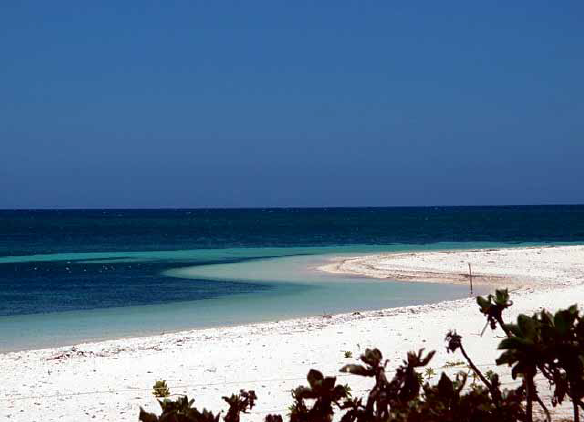
SECO ISLAND, Antique—Local officials themselves will tell you that visiting this uninhabited island off Antique, the province that forms the west coast of Panay Island, is not for the regular tourist.
The crossing to Seco, 38.8 kilometers off the coastal town of Tibiao, takes two and a half hours and can be especially difficult during the southwest monsoon. And because of its isolation, the island offers virtually no amenities for the visiting tourist.
Moreover, local authorities are not especially keen to promote commercial tourism, wishing to focus on preserving the island’s rich variety of marine life. Seco has been declared a marine protected area (MPA) by a municipal ordinance passed in February 2014.
But for the intrepid, a visit to Seco, whose name derives from the Hiligaynon word siko (elbow) because of its bent-arm shape, is off-the-beaten-track travel at its best.
The 4-km island offers white, powdery sand beaches surrounded by clear waters and a profusion of underwater life.
For kiteboarding enthusiasts, Seco has the right wind velocity and other conditions that are ideal for the water sport.
For these reasons, local and foreign tourists have been coming to the island despite the lack of facilities and the distance.
“It has become one of the top kiteboarding spots in the country,” said Karmila Rose Dimamay, who chairs the Tibiao municipal council’s tourism committee.
Tourists typically stay for a few days, said Dimamay, who is also vice chair of Seco Island Development Council (SIDC) composed of elected officials, people’s organizations, nongovernment organizations and representatives of the Municipal Fisheries and Aquatic Resources Management Council (MFARMC).
The trip by motor banca to the island starts at 4 a.m. when the sea is calm, hence visitors should be in Tibiao the night before.
For those seeking to escape the urban jungle, starting out of Tibiao at dawn and seeing the coast illuminated by the moon and stars, is already a delight.
As the boat goes farther out to sea, one looks back to shore to be treated to the sight of the rising sun lighting up the Madja-as mountain range.
After two hours of sailing, Seco Island emerges as a white strip of land in the middle of blue-green waters.
Except for the Bantay Dagat team of volunteer environmental watchmen and fishermen stopping by to rest, no one lives on the island.
There are no structures except for a makeshift sleeping quarters for the watchmen. A makeshift toilet was constructed last year for visitors.
There is no crowd of tourists, vendors and businesses, nor hotels or resorts or blaring music, perfect for those wanting to bask in the sun and take in the rawness of the island. For them there is only the long stretch of uninhabited powdery white sand beach and fish life practically by the shoreline.
Tourists on a day trip have to leave the island by noon as the sea can get rough in the afternoon.
Authorities generally discourage sleeping on the island and visitors wishing to do so have to secure a special permit from the municipality, according to Dimamay. They will have to bring tents, sleeping bags, food, potable water, flashlights and other basic necessities.
Tourists should also protect themselves with wide-brimmed hats and sunblock, especially if traveling on the small motor bancas without overhead covers.
As the crossing can be rough, visitors should expect to get wet. Electronic gadgets and other belongings should be secured in waterproof cases.
Authorities allow only limited activities on the island because of the absence of amenities and the local government’s desire to focus on rehabilitating and protecting its marine resources, said Dimamay.
While promoting the island as a tourist destination, SIDC is also focusing on rehabilitation and preservation of Seco because the island and its rich marine resources play a significant role in the fishery industry of Tibiao and the other towns of northern Antique.
Six Bantay Dagat volunteers guard the island from illegal fishing, receiving only token remuneration from the municipal government.
One of them is Jenny Barrientos, 52, the MFARMC chair, who said fish catch has improved since the Bantay Dagat team was deployed to guard the island from illegal fishers.
How to get there
A visit to Seco starts in Tibiao in northern Antique, about 172 km from Iloilo City and 93 km from Caticlan in Aklan province, the jump-off point for Boracay Island.
Tibiao is about four hours by bus from Iloilo City and about two hours from Caticlan. From Iloilo City, the bus fare to Tibiao is about P180 and from Caticlan, about P80.
Basic sleeping accommodations are available at University of Antique hometel in the town proper and Kasa Raya Traveller’s Inn along the national highway. Rates range from P800 to P1,000 per night for a room for two.
The two-way motorboat rates are from P2,000 for a boat that can accommodate two passengers and P10,000 for a 10-person capacity boat.
RELATED STORIES